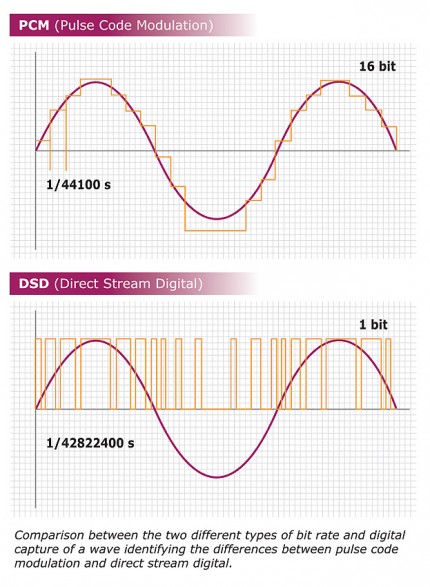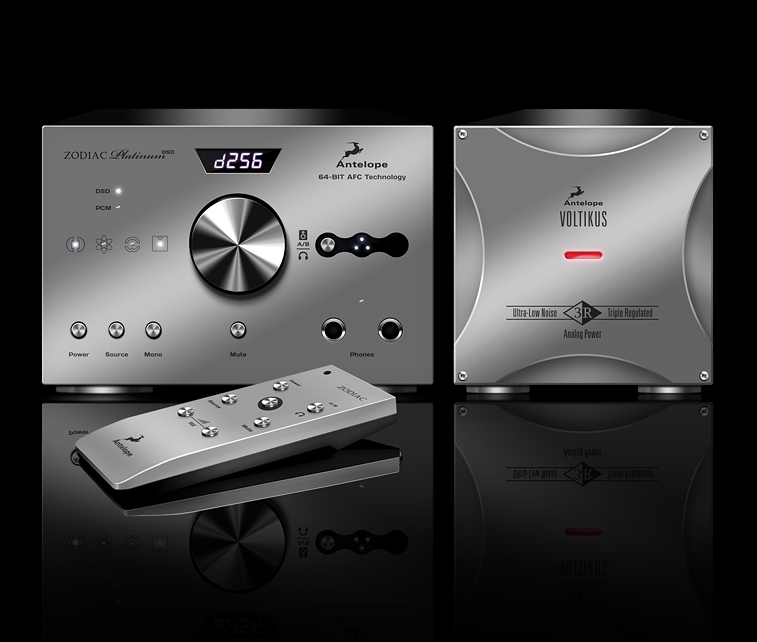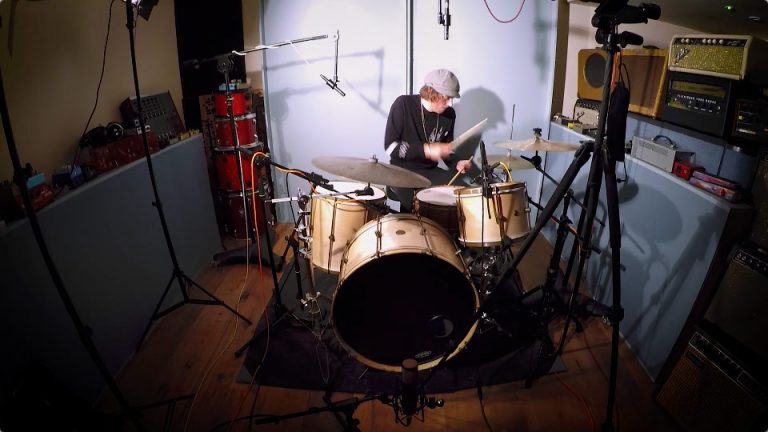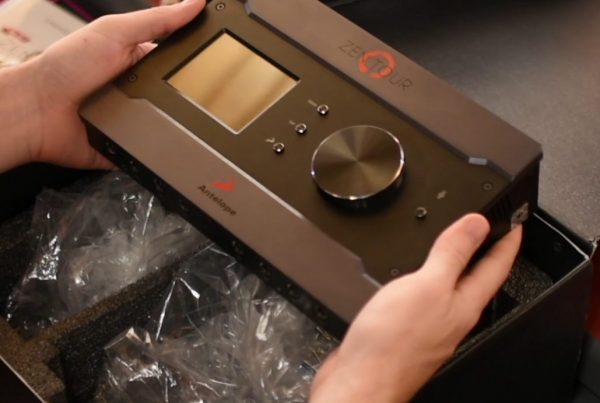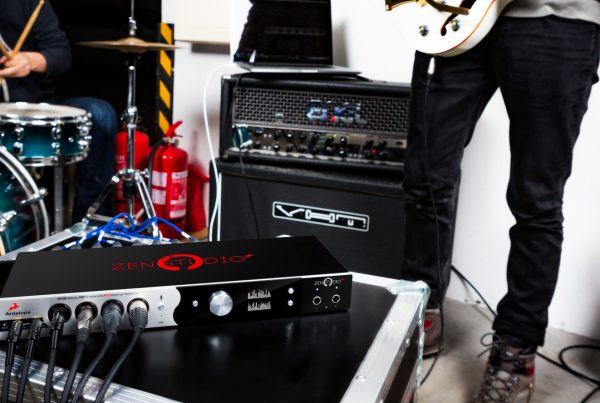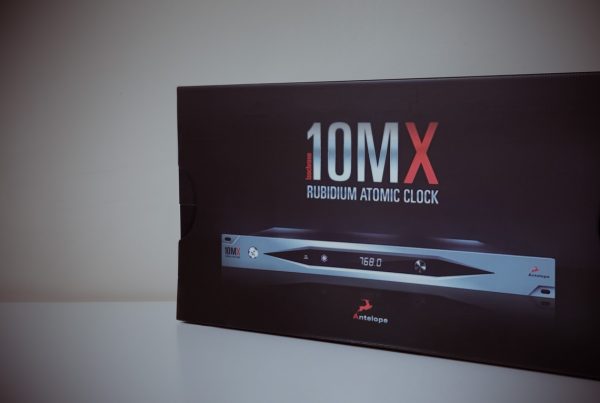Direct Stream Digital
Direct-Stream Digital (DSD) is an audio format developed by Sony and Philips for the Super Audio CD system (based on ideas initially described in a 1954 patent). The technology was then later developed by Playback Designs and pioneered the transfer of DSD files over USB connections.
PCM is usually 16-bit to 24-bit (CD standard is 16-bit and 44.1kHz) whereas DSD is commonly 1-bit or in some cases 8-bit and has a sampling rate of 2.8224MHz. The output from a DSD recorder alternates between levels representing ‘on’ and ‘off’ states, and is a binary signal (called a bitstream).
To minimize quantization errors during the ADC process, the DSD format utilizes noise shaping algorithms (filters), which allow shifting of the quantization distortion up to ultrasonic values, frequencies far outside the human range of hearing. DSD bitstreaming allows the SACD players to be made with a simple 1-bit design and using a low-order analog filter during the DAC process. Although the SACD format achieves a dynamic range of 120dB for all frequencies in the range of human hearing (20Hz to 20kHz) and provides an extended frequency response up to 100kHz, most players in the market offer a maximum of 80-90kHz.
Outputting a DSD signal could be compared to taking a 1-bit delta-sigma analog-to-digital (A/D) converter and removing the decimator.
This process converts the 1-bit bitstream into multibit PCM. In theory, the 1-bit signal is recorded directly and it only requires a lowpass filter in order to reconstruct the original waveform. But in reality the process becomes more complex, as a 1-bit signal cannot be dithered properly and most sigma-delta converters are multibit.
DSD & PCM
It is impossible to make a direct comparison between DSD and PCM, as PCM can be 16 or 24 bit, it has a larger dynamic range. The 1-bit environment of DSD also eliminates the use of DSP in the digital domain (EQ, panning etc). Also most digital audio workstations are PCM-based, therefore multitracks are mixed in PCM and then converted to DSD for SACD mastering.
A new studio format has been developed addressing the issue of DSD mixing, usually referred to as “DSD-wide”, which retains standard DSD’s high sample rate but uses an 8-bit, rather than single-bit digital word length, yet still relies heavily on the noise shaping principle. It becomes almost the same as PCM (it’s sometimes disparagingly referred to as “PCM-narrow”) but has the added benefit of making DSP operations in the studio a great deal more practical. The main difference is that “DSD-wide” still retains 2.8224MHz sampling frequency while the highest frequency in which PCM is edited, is 384kHz. The “DSD-wide” signal is typically used for SACD mastering. As a result of this technique and other developments there are now a few digital audio works stations (DAWs) that operate, or can operate, in the DSD domain.
DSD upsampling
Traditional 1 bit DSD DACs suffer from a sharp build-up of the out-of-band noise. This noise is the consequence of using 1 bit Sigma Delta DACs and is intrinsic to the DSD process. This out-of-band noise is very strong and easily overloads sensitive analog amplifiers, causing them to distort the audio signal. For this reason, the out-of-band noise is typically filtered out using sharp analog filters set at 30-50kHz. Unfortunately, these filters introduce phase nonlinearities in the audio signal and slow down audio transients, defeating most of the benefits of the DSD. Fortunately, there is a way to reduce the build-up of the out-of-band noise and hence reduce damage done by the noise filters. The rate of the noise build-up is related to the order of the modulators used, which is related to the oversampling ratio. The use of 64x oversampling in traditional DSD requires 5th order modulators, which generate rapid noise build-up. In Zodiac Platinum, we upsample the signal to 256x and are able to use much more gentle 3rd order modulators. As a result we can use gentler noise reduction filters and realize the true potential of DSD. The listener can now discover the nuances of the DSD signal that had previously been destroyed by harsh filters.


